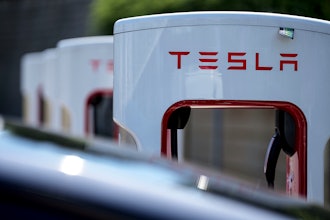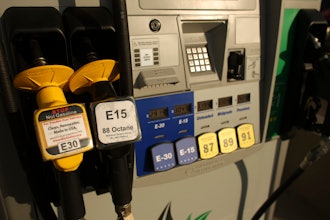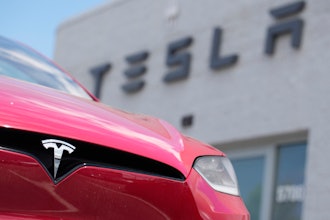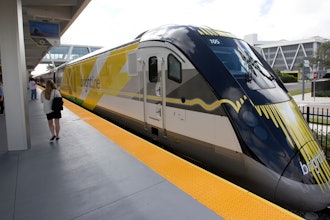Every company has mechanical and electrical engineers, but at PCDworks, a small company resting high atop a tiny Texas town, the staff is used to doing things a little bit differently.
Tucked high upon a hillside in Palestine, TX rests 20,000 square feet of innovation scattered amongst 65 acres of a beautiful southern forest. To reach this campus of creation, you must brave 90 miles of East Texas highway from Dallas, or hop on one of the four puddle-jumpers that lands at Tyler Pounds Regional Airport. For a state known for doing things big, the little airport more closely resembles a facility suited to a small neighborhood library. Whichever way you may take, once you arrive at the PCDworks campus, you may never wish to leave.
The campus is an open and welcoming shift from the sterility commonly found in office buildings and industrial complexes. Connected by a gravel footpath, the six buildings that surround a serene pond have made more than a place of work for the small staff of engineers, it’s become a home.
PCDworks is a product development company that thrives on the improbable, meaning projects that have even been determined to be impossible, and finds solutions. Clients come to the company for discovery and research, which then tends to lead to future development. The campus features many accoutrements to fulfill its engineers' needs throughout the process, including a prototype laboratory, clean room, general instrumentation lab, biological lab, electrical engineering lab, motor lab, brainstorming studio, and workout facility.
A normal product development cycle spans 18 months to two years, though more ambitious projects have lasted six years.
“Clients hire PCD to go and find solutions, to do the discovery,” says PCDworks Vice President Mike Rainone. “Once we have an idea, they often ask us to build it.”
As company herds are culled around the world, and design engineers are given narrower focuses to specialize on specific tasks, Rainone says that clients come to PCDworks because they often don’t have the time, breadth, and/or psychological makeup to explore all the possible solutions to a given problem.
“Their employees are focused on the things they do day in and day out,” he says. “It’s not the engineer’s fault. Every design engineer that I have ever met really loves to innovate. The problem is the antagonism between innovation and knowing something so well that it takes no effort to complete.”
It’s efficient for companies to have employees who are designated to one specialty and nothing more. It’s expeditious for companies to have employees who spend their working lives doing differentials and nothing more.
According to Rainone, engineering schools even teach future designers to stay within the warm confines of their expertise. “When engineers need to get out and go tap dancing around the edges, it makes them uncomfortable,” he says. “And it should make them uncomfortable because they’re dealing in matters that they have no clue about. It’s difficult to get past that initial discomfort.”
The discomfort and the unknown is where PCDworks thrives.
The Automated Tie-Down
The nature of the work that takes place in Palestine doesn’t lend itself to the storyteller. With each new project comes a new non-disclosure agreement, which can make it difficult when landing new clients or working to jumpstart any glimpse of a word-of-mouth campaign. When your résumé is redacted more than a CIA intelligence report, it’s difficult to state your qualifications to a future employer -- unless they are easily persuaded by a series of winks, nudges, and whistles. Luckily, PCDworks is able to usher clients around a few new products without having to black bag their visitors.
The Office of Naval Research commissioned the company to create a self-powered, remote-controlled tensioning system that would reduce damage to cargo aboard naval vessels. The cargo is usually secured with manual tie-downs that are slow, inefficient, and tend to break unexpectedly, which damages the cargo.
PCDworks created a system of individual units that simultaneously secure and release loads. The design included, customized multi-hop wireless communications, advanced sensing capabilities, and a proprietary self-releasing hook.
The team also created a custom motor to couple with a high-performance battery pack, linear actuator, electronics, and the carbon fiber case. Not only did the new lightweight system reduce load and unload times by 20 percent, but now additional uses for the product are also being considered for nuclear waste transport, rail shipping, and aircraft docking.
“It is a true leap of faith that comes with the territory, but at least we’ll give anything a try,” says Rainone. “Most of the time, you come up with solutions that may not be completely feasible technically, or it may be too expensive, but it remains possible.
Failure is part of the PCDworks problem-solving approach. The staff doesn’t have to know whether or not a solution can be found; they just have to know that there is a pathway to further investigation. The practice is risky, but without risk, the elusive becomes impossible.
Waste-Processing Automation
When PCDworks invites clients to trudge up the clay-colored gravel road to the brainstorming studio, the sessions with the firm’s brain trust are meant to tease out previous attempts, successes, and failures. Before the staff begins a project, they must first understand what has already been tried. Rainone notes that by having the clients redefine what they’ve previously attempted and what they know, his staff is able to find the pieces that have been missed.
“We continue to find that, if you force people to do a functional decomposition of the problem, then you find out that they don’t understand the problem very well,” he adds. “We isolate problem areas, and a lot of times, the solutions come from places that [the clients] have already been. We then evaluate the best solutions.”
Solutions were hard to find when the military required a safe autonomous system to deal with wastewater treatment in remote locations. Sam Houston State University had developed an initial product design for waste processing, but the unit required constant technician attention and had poor sensing, control, and auditing capabilities.
PCDworks implemented a LabVIEW-based control system to enable remote sensors and pumps for pressure, depth, and flow. The company also improved the device’s ability to remove sediment and cycle higher rates of wastewater.
The self-sustaining and portable bio-digestion system now holds promise for military operations and disaster relief on a global scale.
“Nobody brings us simple stuff,” says Rainone. “We get complicated, very specialized projects that other companies can’t pull off.”
If you need a circuit board, find a group of electrical engineers, because PCDworks isn’t interested. But if you have a real serious challenge that nobody has been able to achieve, Rainone has a standing invitation to his East Texas facility … as long as you have the money to fund it.























